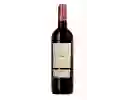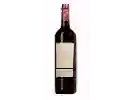
Winery Vignerons du BrulhoisLes Anciens Prieurés Côtes Du Brulhois
This wine is a blend of 2 varietals which are the Cabernet-Sauvignon and the Tannat.
This wine generally goes well with poultry, beef or lamb.
Food and wine pairings with Les Anciens Prieurés Côtes Du Brulhois
Pairings that work perfectly with Les Anciens Prieurés Côtes Du Brulhois
Original food and wine pairings with Les Anciens Prieurés Côtes Du Brulhois
The Les Anciens Prieurés Côtes Du Brulhois of Winery Vignerons du Brulhois matches generally quite well with dishes of beef, lamb or spicy food such as recipes of couscous without couscous maker, sausage and vegetable risotto with cookéo or mahi mahi curry with coconut milk.
Details and technical informations about Winery Vignerons du Brulhois's Les Anciens Prieurés Côtes Du Brulhois.
Discover the grape variety: Cabernet-Sauvignon
Cabernet-Sauvignon noir is a grape variety that originated in France (Bordeaux). It produces a variety of grape specially used for wine making. It is rare to find this grape to eat on our tables. This variety of grape is characterized by small bunches, and small grapes. Cabernet-Sauvignon noir can be found in many vineyards: South-West, Loire Valley, Languedoc & Roussillon, Cognac, Bordeaux, Armagnac, Rhone Valley, Provence & Corsica, Savoie & Bugey, Beaujolais.
Last vintages of this wine
The best vintages of Les Anciens Prieurés Côtes Du Brulhois from Winery Vignerons du Brulhois are 2010
Informations about the Winery Vignerons du Brulhois
The Winery Vignerons du Brulhois is one of of the world's great estates. It offers 33 wines for sale in the of South West to come and discover on site or to buy online.
The wine region of South West
The South-West is a large territorial area of France, comprising the administrative regions of Aquitaine, Limousin and Midi-Pyrénées. However, as far as the French wine area is concerned, the South-West region is a little less clear-cut, as it excludes Bordeaux - a wine region so productive that it is de facto an area in its own right. The wines of the South West have a Long and eventful history. The local rivers play a key role, as they were the main trade routes to bring wines from traditional regions such as Cahors, Bergerac, Buzet and Gaillac to their markets.
The word of the wine: R-M (champagne)
Harvesting and handling. It is the artisan winemaker. He elaborates his own champagne, often a monocru representative of the village or the surrounding villages.














